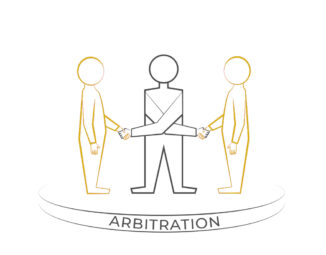Benefits and Risks to Subleasing during the Pandemic
COVID-19 continues to keep employees working from home and many companies have had to conduct layoffs, significantly reducing workforces. As a result, large portions of office and retail space remain empty. In order to fill these spaces and continue receiving rent payments, landlords are increasingly allowing tenants to enter into subleases. Tenants are considering this option in order to reduce costs or as a means of retaining their existing locations until the pandemic ends. Landlords, tenants and subtenants need to consider various factors before deciding if a sublease is the best option for them. Each of these parties should also ensure that certain provisions are included in their subleases in order to protect their respective interests.
Tenants
Benefits to Tenants. Many companies are trying to stay afloat and are looking to reduce costs for the immediate future. However, when the pandemic ends, they will still need a place to conduct business. In these cases, a sublease could allow the tenant to continue to have all, or at least a portion of its rent paid, thereby avoiding a default of its lease and retaining the space for future use. Tenants who are downsizing on a more permanent basis can still retain a portion of the leased space and enter into one or more subleases for the rest of the premises and the remainder of the lease term. A sublease also helps the tenant avoid termination penalties and other costs (including attorneys’ fees) that it could incur if it were forced to terminate its lease.
Subleasing Requirements. A tenant must first determine whether its lease allows for subleasing and what requirements are involved in obtaining the landlord’s consent. These include the timeframe during which the landlord is required to respond, as well as any information that the landlord may need, including financial or other qualifications that may be required with respect to a prospective subtenant. In the event that the primary lease does not allow for subleasing, the tenant will need to request that it be permitted and will have to negotiate those terms with the landlord. It is likely that most landlords will be more receptive to subleasing than they may have been pre-pandemic, since they will want to ensure receipt of a steady rental stream.
Possible Risks to Tenants. Almost all leases will provide that, even if subleasing is permitted, and even if the entire premises is sublet, the original tenant will remain obligated to the landlord and must pay all rent and other costs in the event that the subtenant defaults. Liabilities for which the original tenant remains on the hook include maintenance and building fees and the obligation of the tenant to return the space to its original condition upon termination of the lease. In order to reduce these risks, tenants should properly vet prospective subtenants, as to financial condition and all other relevant matters. The tenant should also include adequate indemnification requirements of the subtenant and security for the subtenant’s obligations under the sublease.
A sublease should also be clear as to whether the tenant or the subtenant is responsible for utilities, insurance and other costs under the lease. An additional item that could be negotiated between the tenant and subtenant are attorneys’ or any other fees payable in connection with obtaining the landlord’s consent to sublet and for preparation and negotiation of the sublease.
Landlords
Benefits to Landlords. Although it may seem that subleasing would provide the most benefit to a tenant, it can be a good option for landlords as well, especially in the current leasing climate. In this time when tenants may not be able to pay their rent, landlords would likely opt for a sublease over a rent reduction or deferment. Most landlords would also prefer not to have to terminate leases since, even if a tenant is required to pay fees or penalties in connection with a lease termination, a landlord would still bear the costs and inconvenience of finding a new tenant, negotiating a new lease and building out the space. Also, it is likely, due to reduced demand in the current market, that the fair market rent for a new lease would be less (at least for the beginning of the lease term) than the rent that the current tenant is paying. Subleasing allows landlords to continue to collect at least some, if not all of the current rent and to save the time and cost of re-renting. There is also the possibility, that after allowing for a short-term sublease, the tenant may be able to take on all obligations of the lease once business is back to normal.
Possible Risks to Landlords. Landlords may not want to accept a subtenant who may not be as financially stable as the original tenant. A landlord should thoroughly vet a subtenant and make sure that it can step into the tenant’s shoes, at least for a limited period of time. Also, and as mentioned above, in order to mitigate the risks of subleasing, Landlords will typically keep the original tenant on the hook for all liabilities in the event that the subtenant defaults.
Although landlords are often not parties to a sublease, a landlord may want to be a party and to deal directly with the subtenant. This will ensure timely payments from and communications with the subtenant, and will avoid the possibility of the tenant withholding a subtenant’s rent from the landlord.
Subtenants
Benefits to Subtenants. Subtenants who may not qualify for or have the financial ability to enter into long-term leases could benefit from the increasing amount of subleasing opportunities. Subleasing provides a business with the ability to try out a new building or have access to a space that it may not otherwise be able to afford as a primary tenant. It also allows for minimum commitment, if the sublease is for a short term. In the alternative, if a subtenant’s business is thriving, its sublease could allow for renewal or extension of the term or an increase of the amount of sub-leased space.
Possible Risks to Sub-tenants. The biggest issue for subtenants is that they are at the mercy of the primary lease and the tenant. Subtenants are not parties to the primary lease, and typically have no rights in the event of the tenant’s default. This is the case even if a subtenant is current on its payments to the tenant. This could also occur if a subtenant has not rented the entire space and the primary tenant has defaulted with respect to the remainder of the leased premises. If the tenant defaults under the primary lease (either by non-payment, bankruptcy or otherwise), the landlord could terminate that lease (and therefore the sublease) and take back all portions of the premises that were covered under the primary lease. Subtenants should be completely familiar with the terms of the primary lease and its effects on the subtenant. Key items for review include permitted use of the space, requirements for the landlord’s consent to sublet, and default and termination provisions.
Another issue is that, if the tenant does not wish to renew the main lease and the subtenant does, the sublease will still end upon the termination of the primary lease. One way to negotiate around this is to provide in the sublease that, as long as the subtenant is in compliance with the sublease (and any other requirements have been met), that the tenant is required to renew the primary lease for a certain amount of time.
Finally, it may benefit the sub-tenant, as well as the landlord (as mentioned above), if the sub-tenant and the landlord deal with each other directly. First, this provides certainty for the subtenant that the landlord is receiving the subtenant’s payments. Also, if the subtenant receives notices and communications directly from the landlord, then the subtenant will be aware of any defaults or issues with the main tenant, in the event they should arise. In such circumstances, the subtenant may be able to quickly negotiate with the landlord as to a continuation of the sublease or a transfer of the primary lease to the subtenant.
We continue to live in uncertain times and the commercial real estate market presents yet another question mark in the current business environment. Tenants and subtenants could benefit from subleases, which allow them to utilize otherwise empty space and to keep their businesses alive. In exchange for some additional negotiation and minor risk, landlords could mitigate their losses and keep rent coming in by allowing subtenants to step into the shoes of struggling or downsizing primary tenants. This may not be the best option in all circumstances and some leases may need to be terminated or assigned. However, subleasing is becoming a popular short-term solution until we can all get back to business as usual.
The information contained in this publication should not be construed as legal or medical advice, is not a substitute for legal counsel or medical consultation, and should not be relied on as such.





